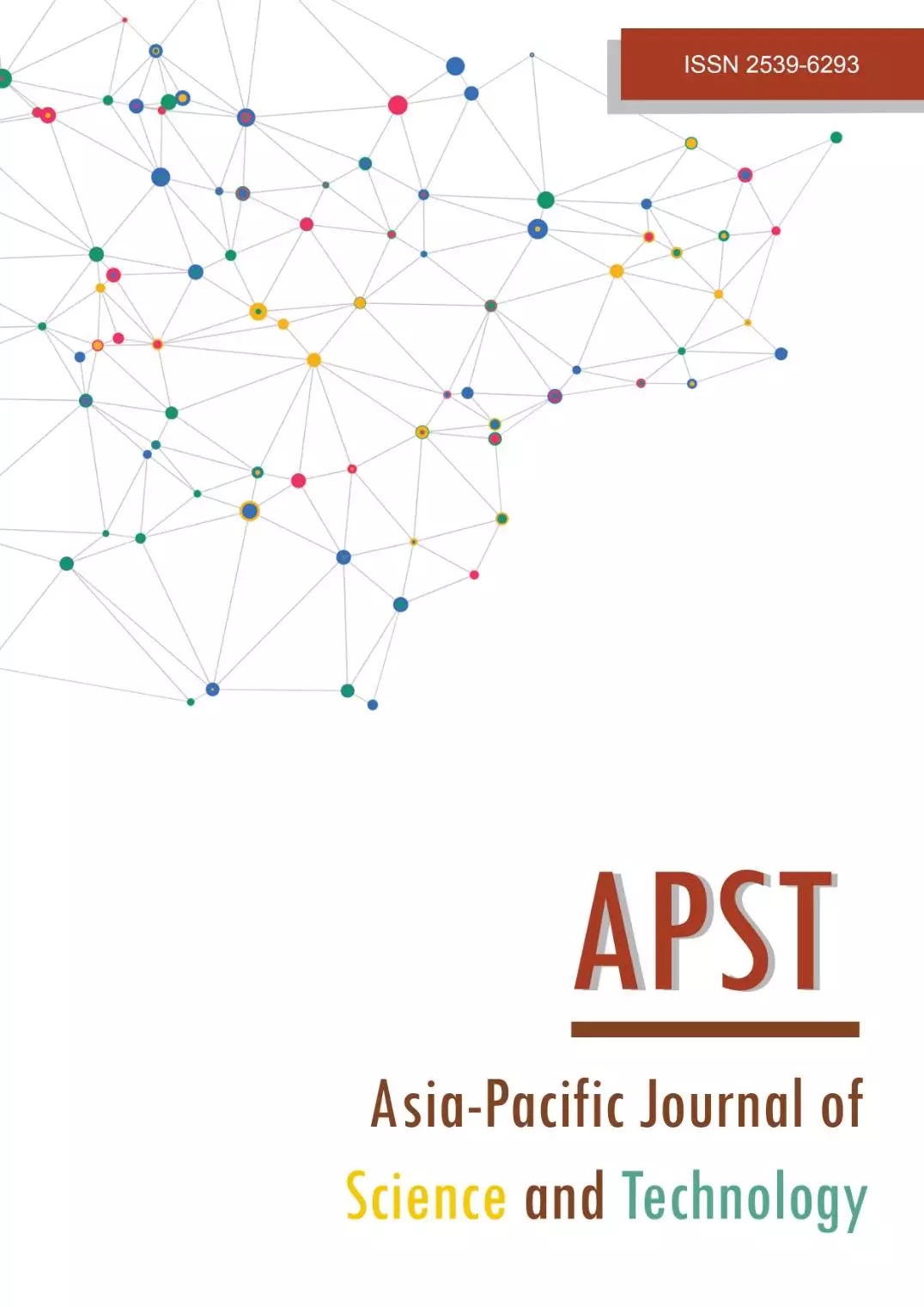An economic assessment of the information system for the surveillance of liver fluke and cholangiocarcinoma of the Fluke Free Thailand Project (Isan cohort)
Main Article Content
Abstract
This study aimed to assess the economic impact of the information system for the surveillance of liver fluke and cholangiocarcinoma of the Fluke Free Thailand Project (Isan cohort) implemented by Khon Kaen University with an allied network. The economic benefit of the Isan cohort was estimated using willingness to pay (WTP), obtained from the contingent valuation method (CVM). WTP was estimated using a Tobit model and maximum likelihood method. Future benefits were forecasted via a triple exponential smoothing method. Investment worthiness was also analyzed using a cost-benefit analysis covering a 10-year investment period, fiscal years 2017-2026, with four financial measures. The estimated result of the users’ WTP for accessing the Isan cohort was 54.64 Baht per access. The average value of the benefits was 27.2 million Baht per year. The payback period (PBP) of the project was within 0.94 years. This project was commercially worthwhile as the net present value was 153.3 million Baht (NPV > 0), the benefit-cost ratio was 6.92 (BCR > 1), and the internal rate of return (IRR) was 110.66% higher than the discount rate (8.00%). The Isan cohort project, therefore, should be invested in further. However, investment, operation, and maintenance of the project are high costs that should be supported by the Thai government, as the benefits of the project would provide an economic and social impact on the entire country. Conversely, the project would not be feasible if users utilized the software less than 50,669 times a year.
Article Details
References
Suwannatrai AT, Thinkhamrop K, Clements AC, Kelly M, Suwannatrai K, Thinkhamrop B, et al. Bayesian spatial analysis of cholangiocarcinoma in northeast Thailand. Sci Rep. 2019;9:14263.
Charbel H, Kawas FH. Cholangiocarcinoma: epidemiology, risk factors, pathogenesis, and diagnosis. Curr Gastroenterol Rep. 2011;13:182-187.
Khuntikeo N, Chamadol N, Yongvanit P, Loilome W, Namwat N, Sithithaworn P, et al. Cohort profile: cholangiocarcinoma screening and care program (CASCAP). BMC Cancer 2015;15:459.
Cholangiocarcinoma Screening and care program. Isan cohort [Internet]. 2020 [cited 2020 Jun 25]. Available from: https://cloud.cascap.in.th/site/index?id=9.
Khuntikeo N, Chamadol N, Youngvanit P, Sithithaworn P, Thinkhamrop B, Loilome W. Health system development for screening, early diagnosis and management of cholangiocarcinoma in northeast, Thailand. [Final report]. Khon Kaen: Health Systems Research Institute, the National Research Council of Thailand, and Khon Kaen University;2018.
Vannakaew N. Analysis type of ultrasound of liver and biliary system from CASCAP project in Don Mod Daeng district, Ubon Ratchathani province in the year 2014-2015. JUR. 2017;15(2):5-18.
Kantha K, Koetsuk L, Suwannasak C. Analysis type of liver and biliary system in Chun district, Phayao province. JDPCHS. 2009;6(2) Suppl 1:1-11.
Chamadol N, Laopaiboon V, Srinakarin J, Loilome W, Yongvanit P, Thinkhamrop B, et al. Teleconsultation ultrasonography: a new weapon to combat cholangiocarcinoma. ESMO Open. 2017 ;22;2(3): e000231. PMID:29209530.
Leelahanaj T. Economic evaluation of healthcare interventions. J Psychiatr Assoc Thailand. 2003;48:57-65.
Tantivess S, Teerawattananon Y, Mills A. Strengthening cost-effectiveness analysis in Thailand through the establishment of the health intervention and technology assessment program. Pharmacoeconomics 2009;27:931-945.
OECD. E-government for better government [Internet]. Paris: OECD Publishing; 2005 [cited 2020 Jun 25]. Available from: https://doi.org/10.1787/9789264018341-en.
Hsu JL, Shiue CW. Consumers’ willingness to pay for non-pirated software. J Bus Ethics. 2008;81:715-732.
Han B, Windsor J. User’s willingness to pay on social network sites. J Comput Inf Syst. 2011;51:31-40.
Makkonen M, Halttunen V, Frank L. The effects of gender, age, and income on the willingness to pay for music downloads. In: Pucihar A, Gričar J, Lechner U, Wigand DL and Clarke R, editors. The 24th Bled e-Conference e-Future: creating solutions for the individual, organizations and society;2011 June 12-15; Bled, Slovenia. Georgia:AIS Electronic Library; 2011. p. 102-111.
Han B, Windsor J. An investigation on the user’s willingness to pay on hedonic social network sites. In: Joshi KD, Yoo Y, editors. The 18th Americas Conference on Information Systems (AMCIS 2012 Proceeding); 2012 August 9-12: Washington D.C, United States. California: AIS Electronic Library; 2012. p.1-8.
Terdudomtham T, Khanti W, Techakanont K. Return on investment of information technology in Government. Final report. Bangkok: National Electronics and Computer Technology Center, Thammasat University; 2004.
Yamane T. Statistics: an introductory analysis. 3rd ed. New York: Harper and Row;1973.
Mitchell RC, Carson RT, Using surveys to value public goods: the contingent valuation method. 3rd ed. Washington, D.C.: Resources for the Future;1993.
Tobin J. Estimation of relationships for limited dependent variables. Econometrica.1958;26:24-36.
Donaldson C, Shackley P, Abdalla M, Miedzybrodzka Z. Willingness to pay for antenatal carrier screening for cystic fibrosis. Health Econ.1995;4:439-452.
Havet N, Morelle M, Remonnay R, Carrere M. Econometric treatment of few protest responses in willingness-to-pay studies: an application in health care. J Demogr Econ. 2012;78:53-74.
Greene WH. Econometric analysis. 7th ed. Harlow: Pearson Education Limited;2012.
Whitehead JC. Combining willingness to pay and behavior data with limited information. Resour Energy Econ. 2005;27:143-155.
Whitehead JC. Improving willingness to pay estimates for quality improvements through joint estimation with quality perceptions. South Econ J. 2006;73:100-111.
Holt CC. Forecasting seasonals and trends by exponentially weighted moving averages. Int J Forecast. 2004;20:5-10.
Winters PR. Forecasting sales by exponentially weighted moving averages. Manage Sci. 1960;6:324-342.
Hyndman RJ, Athanasopoulos G. Forecasting: principles and practice. 2nd ed. Melbourne: OTexts publishing; 2018.
Lewis CD. Industrial and business forecasting methods. London: Butterworth Scientific;1982.
Digital Government Development Agency. The study report of the worthiness analysis in the operation of electronic government in 2016 [Internet]. 2016 [cited 2020 Jun 25]. Available from: https://www.dga.or.
th /upload/download/file_8ef98c13818b20ce486afaed2c7a30e2.pdf.


